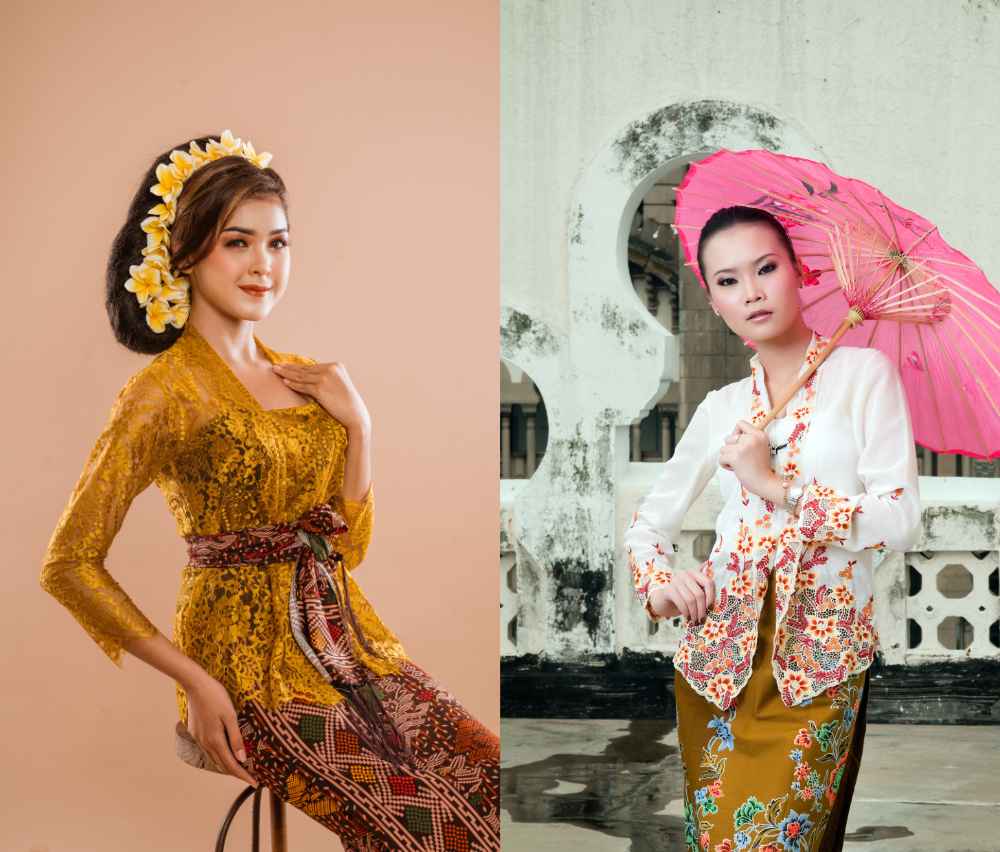
Kartini Day and Kebaya, Indonesian Women's Outfit
April 19, 2024
Hey there, fashion enthusiasts! Today, we’re diving into the beautiful world of the kebaya, an iconic Indonesian garment that not only represents fashion but also embodies heritage and national pride. As we approach Kartini Day—a day dedicated to honoring women’s empowerment in Indonesia—there’s no better time to explore the significance of the kebaya and its rich history. So, let’s get started!
A Symbol of Heritage and Identity
In Southeast Asia, the kebaya stands tall as a symbol of culture and identity. While it originated in Indonesia, this traditional outfit has made its mark across Brunei, Malaysia, Singapore, and southern Thailand, each region adding its own unique twist. With every stitch and design, the kebaya narrates a historical saga, celebrating the diverse cultures of Southeast Asia.
Tracing Back Kebaya’s History – or, Her Story?
So, where did the kebaya come from? Well, its story is as rich as its fabric! The kebaya is believed to trace its origins back to the Middle East, specifically from the Turkic word “qaba,” which comes from the Persian term for a “robe of honor.” By the time the Portuguese arrived in Java in 1512, the open-fronted kebaya was already a beloved garment among Javanese royals and elites.
Fashion historians Linda Welters and Abby Lillethun, in their book “Fashion History: A Global View,” detail that the term “kebaya” evolved from the Portuguese word “caba” or “cabaya,” which translates to “tunic.” Originally, kebayas were worn by both men and women, but by the 19th century, they became exclusively associated with women’s fashion in Southeast Asia.
Kebaya and Its Stylish Companions
Traditionally, the kebaya was paired with a batik sarong, creating a stunning ensemble that gained immense popularity among Dutch women in the Dutch East Indies. This combination was also embraced by Muslim women seeking a modest yet fashionable dress code.
As time went on, the kebaya evolved to adapt to the tropical climate, resulting in various styles. The kebaya panjang features a knee-length blouse often adorned with beautiful brooches, while the kebaya kartini is favored by Javanese nobility. Other versions, like the kebaya kutabaru (which has a material underneath resembling a kemben) and the vibrant, embroidered kebaya nyonya, showcase the versatility and artistry of this garment.

Kebaya Evolution in Today’s Fashion Landscape
Fast forward to today, and the kebaya remains a staple in Southeast Asian fashion. Local artisans have embraced the kebaya and added their own flair. In Bali, women typically fasten their kebaya with a colorful sash, while in Java, a classic white kebaya edged with European lace continues to be a popular choice. This style was introduced during the colonial era, adding a unique touch to the traditional garment.
In Brunei, kebayas often feature luxurious songket fabric woven with gold threads, reflecting local tastes and traditions. The kebaya is not just a piece of clothing; it’s a canvas for creativity and cultural expression!
A Garment of Resistance
The kebaya has also played a significant role in history, serving as a symbol of resistance and pride. During World War II, Javanese women in internment camps wore the kebaya as a sign of rebellion against oppression. Its resilience was further solidified when, in 1945, it was declared Indonesia’s national dress. By the mid-20th century, the kebaya had become the chosen uniform for female crew members of several Southeast Asian airlines, showcasing its enduring appeal.
The Kebaya Today: A Celebration of Culture
Today, the kebaya is celebrated not just as everyday attire but also as festive wear. You can spot this beautiful garment at special events like Peranakan weddings in Penang or casually worn by women in Bali.
Particularly on Kartini Day, celebrated every April 21st in Indonesia, the kebaya is proudly donned by women across the nation. This day, named after the legendary figure Raden Ajeng Kartini, symbolizes women’s empowerment and the ongoing fight for gender equality.
Wearing the kebaya on this day is not just about honoring tradition; it’s a statement of pride and resilience. Women wear it to celebrate their heritage and the strides made toward women’s rights in Indonesia.
The Modern Kebaya: A Fusion of Tradition and Trend
In recent years, the kebaya has been reimagined by contemporary designers, making it more accessible to younger generations. Modern kebaya styles incorporate innovative fabrics, trendy cuts, and artistic embellishments, ensuring that this traditional outfit remains relevant in today’s fashion landscape.
Social media has also played a significant role in promoting the kebaya, with influencers and fashionistas showcasing their unique interpretations. This has sparked a renewed interest in the kebaya, attracting both local and international audiences.

Final Thoughts: More than Just an Outfit
The kebaya is more than just an outfit; it’s a beautiful representation of Indonesian culture, heritage, and the strength of women. As we celebrate Kartini’s Day, let’s take a moment to appreciate the kebaya’s journey from its historical roots to its current status as a fashion icon.
Whether you’re wearing it for a special occasion or just to express your cultural pride, the kebaya is a garment that tells a story—your story. So, go ahead and embrace this stunning piece of history, and let it inspire you to celebrate your own heritage and the women who paved the way for future generations.
Happy Kartini Day, and may your kebaya always shine with pride!
Source: BBC, Prambors
Follow D-Muse to stay current with fashion trends, lifestyle tips, and exciting events. DM us @dmusemagz now to get all the information you need!
